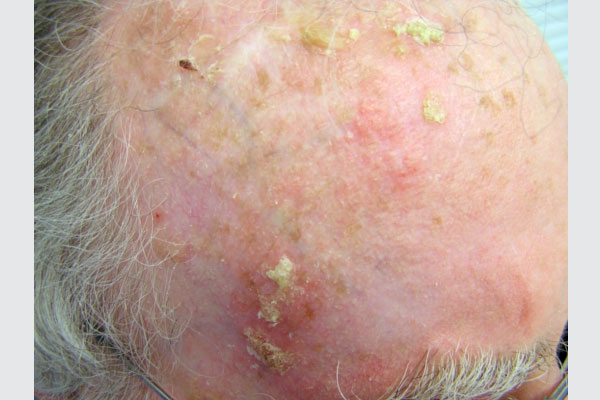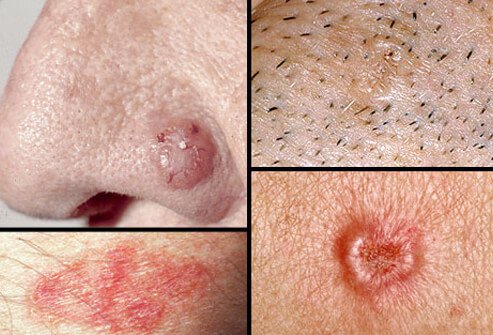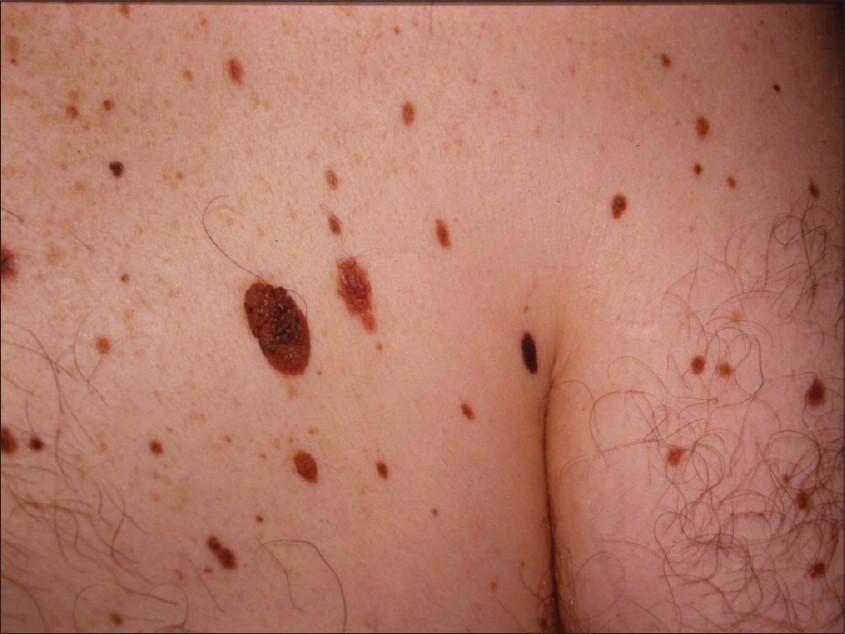 Actinic Keratosis - The Most Common Precancer
Actinic Keratosis - The Most Common Precancer
Scaly or crusty growths (lesions) caused by damage from the sun’s ultraviolet (UV) rays, actinic keratosis (AK) is also known as solar keratoses. They typically appear on sun-exposed areas such as the face, bald scalp, lips, and the back of the hands, and are often elevated, rough in texture, and resemble warts. Most become red, but some will be tan, pink, red, and/or flesh-toned. Untreated AKs can advance to squamous cell carcinoma (SCC), the second most common form of skin cancer, and some experts believe they are actually the earliest stage of SCC...
Read More
 Basal Cell Carcinoma (BCC) - The Most Frequently Occurring Form of Skin Cancer
Basal Cell Carcinoma (BCC) - The Most Frequently Occurring Form of Skin Cancer
BCCs are abnormal, uncontrolled growths or lesions that arise in the skin’s basal cells, which line the deepest layer of the epidermis (the outermost layer of the skin). BCCs often look like open sores, red patches, pink growths, shiny bumps, or scars. Usually caused by a combination of cumulative UV exposure and intense, occasional UV exposure, BCC can be highly disfiguring if allowed to grow, but almost never spreads (metastastasizes) beyond the original tumor site. Only in exceedingly rare cases can BCC spread to other parts of the body and become life-threatening...
Read More
 Dysplastic Nevi (Atypical Moles)
Dysplastic Nevi (Atypical Moles)
Dysplastic Nevi (Atypical Moles) are unusual benign moles that may resemble melanoma. People who have them are at increased risk of developing single or multiple melanomas. The higher the number of these moles someone has, the higher the risk; those who have 10 or more have 12 times the risk of developing melanoma compared to the general population. Dysplastic nevi are found significantly more often in melanoma patients than in the general population
Read More

Malignant Melanoma - The most dangerous form of skin cancer
These cancerous growths develop when unrepaired DNA damage to skin cells (most often caused by ultraviolet radiation from sunshine or tanning beds) triggers mutations (genetic defects) that lead the skin cells to multiply rapidly and form malignant tumors. These tumors originate in the pigment-producing melanocytes in the basal layer of the epidermis. Melanomas often resemble moles; some develop from moles. The majority of melanomas are black or brown, but they can also be skin-colored, pink, red, purple, blue or white
Squamous Cell Carcinoma (SCC) - The Second Most Common Form of Skin Cancer
Squamous cell carcinoma (SCC) is an uncontrolled growth of abnormal cells arising in the squamous cells, which compose most of the skin’s upper layers (the epidermis). SCCs often look like scaly red patches, open sores, elevated growths with a central depression, or warts; they may crust or bleed. SCC is mainly caused by cumulative UV exposure over the course of a lifetime. It can become disfiguring and sometimes deadly if allowed to grow. An estimated 700,000 cases of SCC are diagnosed each year in the US, resulting in approximately 2,500 deaths...
 Skin Cancer Prevention Tips
Skin Cancer Prevention Tips
Most skin cancer can be prevented by practicing sun protection, according to numerous research studies. Research also shows that not only does sun protection reduce one’s risk of developing skin cancer; sun protection also may decrease the likelihood of recurrence. Even if you have spent a lot of time in the sun or developed skin cancer, it’s never too late to begin protecting your skin. Dr Jhetam recommends that everyone protect their skin by following these sun protection practices...
Read More

